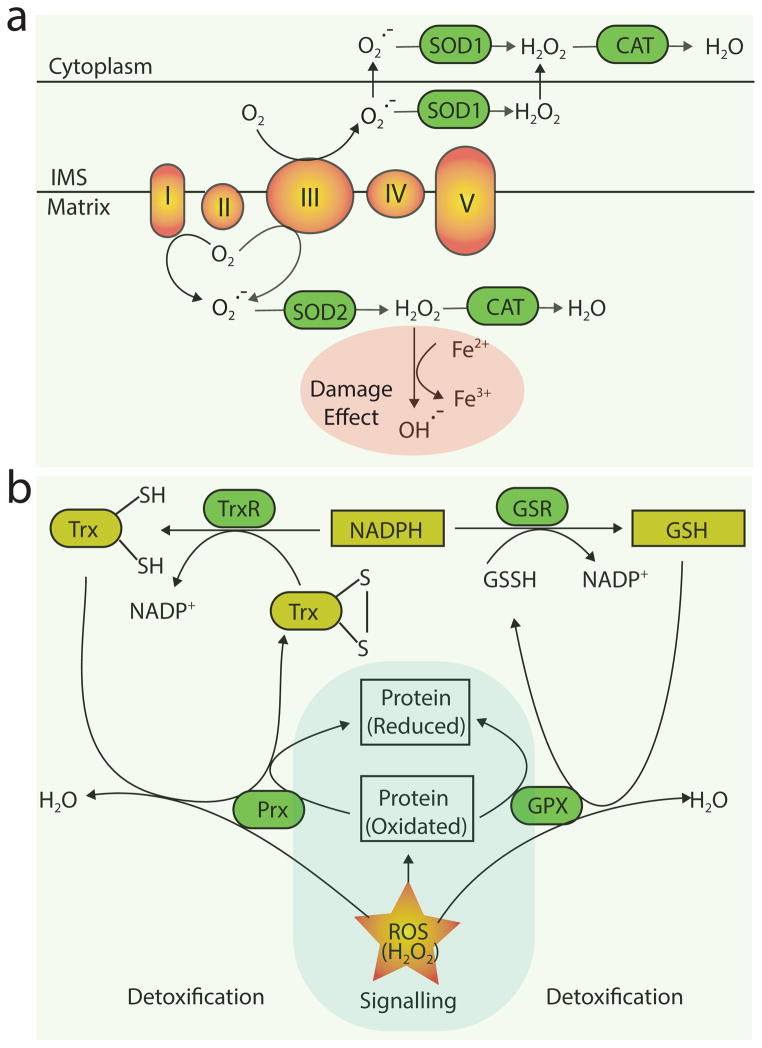Figure 2.
Cellular antioxidant systems. (a) Superoxide dismutase (SOD) and catalase-based reactive oxygen species (ROS)-scavenge system, including SODs and catalases (CAT), which is NADPH-independent. SOD1 is responsible for dismutating O2− generated in the mitochondrial intermembrane space by the electron transfer chain, and from other locations in the cytoplasm. SOD2 is responsible for dismutating O2− in the mitochondrial matrix. Catalases further catalyze the reaction from H2O2 into H2O and O2. (b) The glutathione peroxidase and thioredoxin ROS-scavenge systems that require NADPH. H2O2 can be converted to H2O by glutathione peroxidase (GPX) and peroxiredoxin (Prx), which require the reducing power from glutathione (GSH) and thioredoxin (Trx). NADPH is utilized to reduce oxidized glutathione (GSSH) and Trx by glutathione reductase (GSR) and thioredoxin reductase (TrxR), respectively. GPX and Prx also reduce oxidized proteins, which control redox-dependent signaling pathways.

